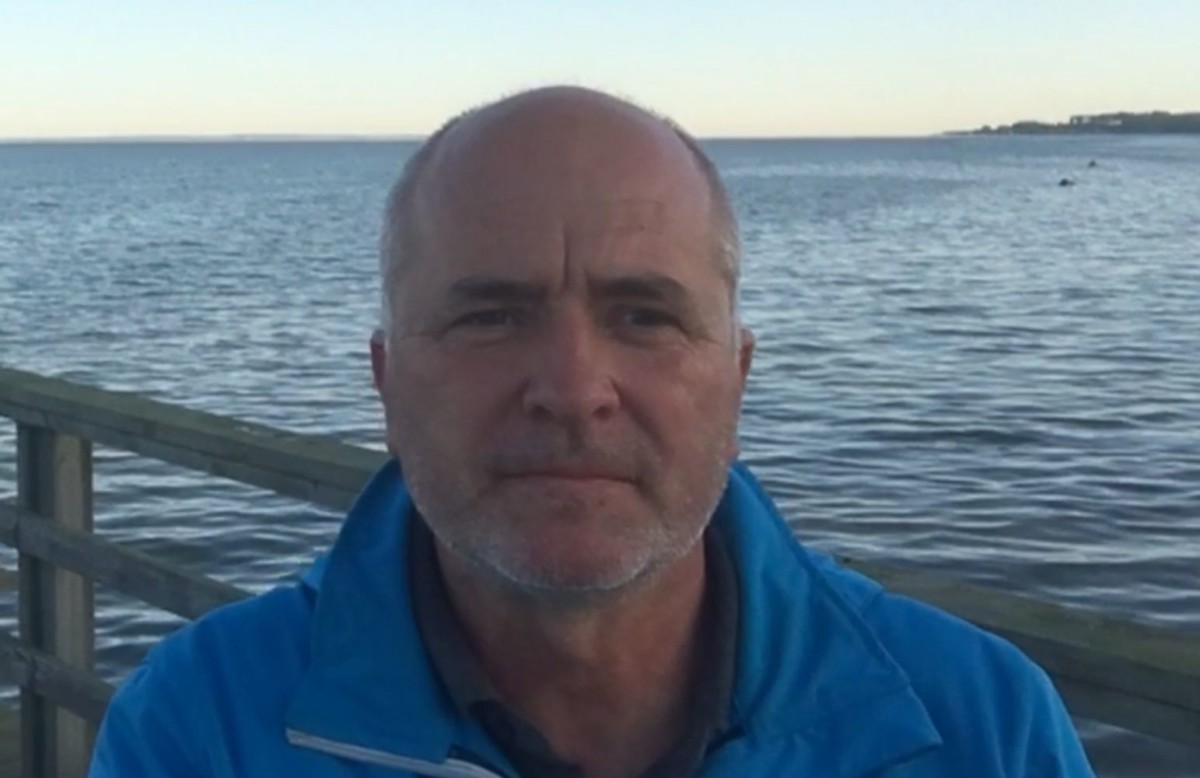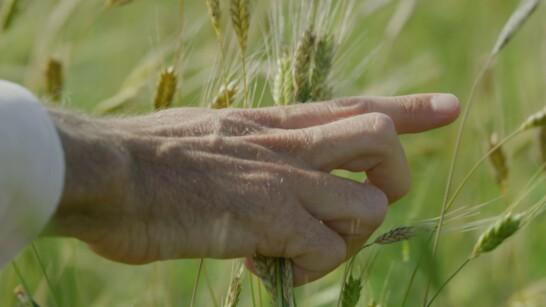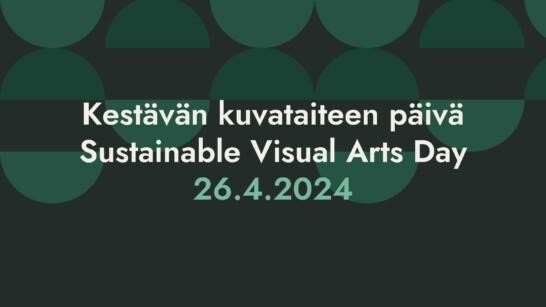News
Dead Zones of the Baltic Sea

This interview with Swedish scientist Anders Tengberg continues the series conducted by artist Jana Winderen and Executive Director and curator Paula Toppila to raise awareness and understanding of the changes taking place in the Baltic Sea. Tengberg is an Associate Professor at Gothenburg University and at Chalmers University of Technology, both in Sweden. He is involved in the development of underwater technology, including underwater robots and oxygen sensors. He has a long-term involvement in Baltic-Sea research, specifically the eutrophication problem, and has led research projects in the Gulf of Finland.
The Question of Oxygen
Jana Winderen (JW): Could you say something about where oxygen originally comes from in the Baltic Sea?
Anders Tengberg (AT): Oxygen is created at the surface, so there is no known way that oxygen could be created when you go below the surface zone. Oxygen is created by algae blooms as a by-product of photosynthesis. Also, when there are waves and storms, oxygen can be imported into the sea as bubbles. So, all this is happening on the surface, because photosynthesis can only happen when there is light. For the algae to grow, you need nutrients, the same as farmers put on their fields, and you need light, and you need carbon, which is available in the water. Then you can have photosynthesis, and you can have algae growing. And they produce the organic material that fish eat, and which drives the whole ecosystem.
JW: I have been in the Barents Sea, and I learned about the importance of the spring bloom there for the whole ecosystem, but, on the other hand, when we talk about the same phenomena for example in a lake, the effect can be the exact opposite. Could you say something about what makes the difference?
AT: The origin of algae blooms’ natural cycle in the northern hemisphere, like the Baltic Sea, is that in the spring you have nutrients in the surface water that were mixed into it from deeper down during winter storms. Then, when the light comes in the spring, these two things trigger the natural algae bloom. Algae bloom is essential for the ecosystem, because without the algae produced, the whole ecosystem won’t run. A challenge for the Baltic Sea is that it is semi-enclosed, with limited exchange of water with the North Sea.
For decades, there has been too much nutrient discharged from human activities on land, There are about 80 million people living around the Baltic Sea. These nutrients are stored in the bottom sediments and continuously leak into the overlying water. Especially an overload of phosphorus is a problem, because it fuels the summer blooms of blue-green algae/cyanobacteria. They can be toxic, and they add algae to this water and, when these algae die and fall to the sea floor, they are broken down by bacteria, and that deterioration consumes oxygen again. This is a vicious circle that leads to oxygen-free dead zones in the deeper part of the Baltic.
The effect of salinity pulses and storms
JW: So these dead zones, how do you define a dead zone?
AT: When you talk about a dead zone, it is not completely dead. There are still viruses and bacteria living there, but there are no larger organisms, like fish or bottom-living organisms, like different types of worms living in the sediment, or other types of Crustacea and shellfish. They cannot live there because the dead sea bottom is without oxygen. If this condition continues for a long time in the really deep areas in the Baltic Sea, hydrogen sulphide appears. It smells like rotten egg. So, when you have this production of hydrogen sulphide, this is toxic for all the higher living organisms. Only some of the specialized bacteria can handle it.
JW: Could you say more about what happens with the storms and the salt water coming into Baltic Sea?
AT: Every now and then, depending on the weather situation, and for example if you have a storm in the North Sea, you have an inflow of heavier, saltier water from North Sea, which is rich in oxygen. When this kind of water descends into the deeper layers of the Baltic Sea, oxygen is added, but these bottoms only stay oxygenated for a short period, months/years.
Some of my colleagues are now in the Baltic Sea, measuring oxygen levels at the sea floor. In 2014, there was a big inflow of oxygen-rich water, but now that oxygen is more or less gone. So, it only brings a temporary improvement in the bottom layers. And, in general, there is an outflow of water from the Baltic Sea, because there is more water coming in to the Baltic Sea from the rivers. We have the Polish rivers, Swedish and Finnish rivers. The largest river, which accounts for about 20% of the water input to the Baltic Sea, is the Neva – which runs through St Petersburg and takes water from one of the biggest lakes in the world, to the Baltic Sea.
Blue-green algae and sedimented phosphorus in the sea bottom
JW: What about global warming? We had a very warm winter, can you see all that already in the measurements?
AT: Maybe you don’t see that so well yet. However, there were situations in the 1990s, in the Baltic Sea, when there were less blue-green algae blooms, less of this cyanobacteria, and that was strongly related to a couple of years that were much more windy. There were more storms for a couple of years, and then the situation improved. The storm waves and winds mix down more oxygen to the deeper layers.
The problem with the Baltic Sea is that this cyanobacteria. They are like peas in a field, they need phosphorus to grow. That is one the nutrients, but the tricky thing with them is that they can take up nitrogen from the atmosphere. If both nitrogen and phosphorus were available in the water, the normal, more healthy algae, you can say, would then outcompete them easily. But now, after the spring bloom, there is no more nitrogen left in the water, but there is still phosphorus. And then these blue-green algae can grow, because they can take up nitrogen from the atmosphere. And the reason there is all the time so much phosphorus in the Baltic Sea water is because phosphorus has been stored in the sea floor for many years of industrialization, and from industrial agriculture and run-off from land. It is stored in the sediments, and when the bottom layers become low in oxygen, this stored phosphorus is released from the sediments. It then contributes to the possibility of these summer blooms of blue-green algae.
JW: That is interesting. We have interviewed Finnish researcher and farmer Tuomas Mattila about this legacy phosphorus that is sedimented in the agricultural land. So the same happens in the bottom of the sea. How would you describe the situation in general in the Baltic Sea?
AT: Media often want to report only very negative points. We have experienced that many times, not only from the Baltic Sea, but also with news from Antarctica. That gives a negative view of things to the public, and this is sad. Because, for example, the situation in the Baltic Sea has improved. It was probably at its worst in the 1980s, in terms of eutrophication, pollution and those things. But it has improved greatly in the coastal cities, like Helsinki and Stockholm. Even cities like St Petersburg – that is the biggest city in the Baltic Sea area, and one the biggest in Europe – now they have a fully implemented modern water-treatment facility. There is more eel grass, which is a sign of a healthy environment. It is growing deeper and you can swim safely in many of the cities. But since we have this storage of phosphorus in the bottom sediment, which comes out when the oxygen goes low, it takes a very long time before you can see real improvement.
In the Gulf of Finland project that was one of several Gulf of Finland projects that we worked on in 2000–2005 we measured the input of nutrients, including phosphorus, from the sediments with our robots, and compared that with what was coming from land. During that time, agriculture in the former Soviet Union had collapsed, which led to a dramatic decrease in land input from Russia and Estonia. Still, phosphorus levels were increasing and our investigations showed that about 80% of the supply was actually coming from the sediments. But today, since 2010 or so, phosphorus levels are decreasing in the Gulf of Finland. The Baltic Sea is far from dead. It has a lot of fish and, today, I just heard on the radio news that the association that approves sustainable fishing just approved Baltic Sea fishing of herring. But many of the deeper bottom zones are still without oxygen for long time periods.
Saduria entomon – survivor species in the dead zones
JW: You told me there is one species that can take quite low oxygen levels, could you tell us about that?
AT: Yes, that is a fantastic species, I think. We saw it a lot in the Gulf of Finland project, coming into an area where there was low oxygen for a long time, and we came back with automatic systems to incubate sediments and measure at the sea floor. This animal is called Saduria entomon. It is a benthic isopod crustacean that has been here since the Baltic Sea was a freshwater lake. It is a fantastic animal, because they can tolerate very low oxygen. They just stay calm for one or two months, something like that. They can store a lot of oxygen in their blood. And then, whenever the sediments are oxygenated, they become active again.
Oxygen levels in the Baltic Sea vary much more than we used to think. If you go to the deep areas, not in the Gulf of Finland, but in the deeper areas of the Baltic, there you have low oxygen or no oxygen for five years, until the next inflow comes. But everything above a hundred metres in the Baltic Sea will be much more variable than people think, and we see this every time we put out an instrument. So, based on monthly sampling, it is very difficult to make a good assessment, and there are other problems with monthly sampling.
JW: So saduria was originally a freshwater animal, when the Baltic Sea was a lake, and then it opened up to salt water and it survived?
AT: It is an interesting species, because the Baltic Sea is poor in species, since it is brackish water. Brackish water is more stressful for animals, because the salinity varies and is low. That’s also why mussels in the south Baltic Sea are much smaller than you have on the west coast of Sweden, for example. Our research is not on saduria, but about chemical oceanography, but it was funny to see that, every time we came to a place that was just recently oxygenated, we had lots of these saduria there.
But the dumping of chemical weapons, which was done after the Second World War, is a sad thing for the Baltic Sea, in areas close to Gotland and close to Bornholm. Chemical weapons are, most of the time, in zones with no oxygen, but we want to see how the toxic substances from the chemical weapons are accumulating in the ecosystem. Here, we have been targeting to see if we can trap saduria, because it is an animal that moves in the sediments, and comes back whenever there is some oxygen. So, we are looking at whether we could use the saduria as a target organism to see if there is an accumulation of toxic substances from the dumped chemical weapons.


